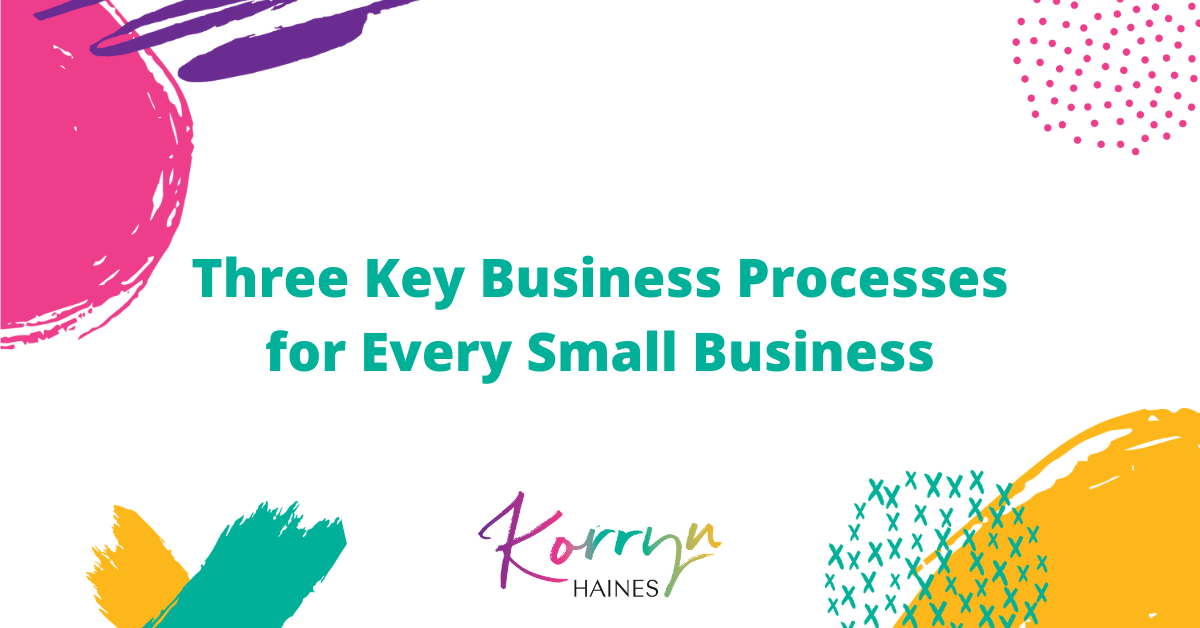Keeping Your Business Wheels Turning In Uncertain Times
Small business ownership very quickly turns into multiple balls in the air scenarios. As an administration consultant I have not only lived it in starting my own business but I see it all the time when I work with my clients. And it’s something that is even more obvious in recent times as businesses have had to change their paths to continue to work during lockdowns. Owners and employees have had to shift and take on more load as revenues have shrunk and uncertainty crept in with slashing expenses to keep their businesses lean.
Here are the three key business processes that have come into sharp focus and how having some structure you are able to keep the wheels spinning with the back of house administration in your business.
 Business Process #1 – Daily Operations
Business Process #1 – Daily Operations
When everything seems to be heading to hell in a handbasket or you’re feeling like you’re in the middle of a complete and utter upheaval – having structure about your daily operations allows you some certainty in uncertain circumstances.
What I mean by this – having a daily schedule around doing the everyday tasks on your to-do list – of course, as things come across your path this may change, but on a whole having a structure for your day helps you to keep on track.
For example my key daily items that I have processes set around are:
Emails – Incoming and Outgoing
- I have set times in my day where I am in my inbox – outside of that, my inbox is closed down or I have my emails open in my Action Items folder (and not my actual inbox).
- I have automatic filters and categories for all of my incoming emails – if an email comes in that doesn’t automatically have a filter applied, it is likely to be one of the last emails I will action as it’s either a cold call or spam.
- Response templates are set up for anything that I do repetitively – eg issuing invoices, sending proposals, answering enquiries, requests for information.
- Anything I can’t action right away is filed into my Action Items folder where it will stay on my radar until it’s complete.
Schedule
- My calendar is all online and looks like someone has done a colour by numbers on it – I have specific colours for the types of appointments and I have all of my client work scheduled in timeslots across my week.
- I have a process around what days are and what times of the day are set aside for specific tasks. Mornings I am most productive so mornings are my head down bottom up time periods. By the afternoon my brain is a little fried so I avoid scheduling any client calls or things that need focus for the afternoons. Also days earlier in my week are the get stuck in for clients and days later in the week are for my own business tasks.
- Using Calendly for appointment scheduling – rather than playing the emails and messages backwards and forwards game with clients and external contacts I use Calendly to schedule appointments – I have a set link for specific appointment types and whenever I am asked if I’d like to meet up I forward the link through to the requestor and they are able to select a time that works best for them based on my availability (and I have rules set around what days and times I am available).
Day-To-Day Marketing
- Each morning and afternoon (usually coinciding with my email checking) I log on to my main social media channels and do a brief scroll and check notifications. If time allows I will do a short scroll and comment with anything that pops up in my main feed that needs looking at but otherwise that’s it.
- I have around 80% of my posts on Facebook / Instagram / LinkedIn pre-scheduled so it’s not often that I will do a post on the fly.
- Generally around lunch time (or to be honest, just after lunch) is when I will pop into any Facebook Groups I’m in and take a look around at what discussions are being had and answer anything that I may be able to help with.
- I have templates of responses to questions I am asked frequently that I sometimes cut and paste and tweak when needed saved in my Google Drive that I am able to access both on my desktop and on my mobile – so that I am able to give concise answers.
- I also have a favourites folder overflowing with favourite links to how-to documents and videos that I am able to draw on quickly when needed too.
Communications
- Any phonecalls needing to be made are done in the morning (when i’m most chipper).
- Any incoming phonecalls throughout the day go to voicemail and when I have my afternoon session of tidying up for the day I will triage the messages left (if any) and call back that afternoon if needed otherwise they are placed on the to call list for the following morning.
 Business Process #2 – Receiving Income
Business Process #2 – Receiving Income
I know it sounds obvious – but you’d be surprised at how many businesses think they have a process but in reality leave it a little up to chance and what is happening in their business at the time. It also depends on whether you are a service provider or provide products – whether you’re selling purely online or if you have a shopfront.
What does this mean? Having set processes and schedules around the following will allow you to have a clear structure and process for your customers to pay you.
- Set a schedule for when you will issue invoices (I invoice my clients fortnightly every Monday)
- Setting up email templates for your invoices to be sent out (or using the templates within your accounting software)
- Set your payment terms and have them documented in your agreements, on your invoices and in your process manuals for your business.
- Set a process to follow when you don’t receive payment (ie how long do you wait to follow up after non-payment, have templates for these communications). I have CollectMore and thankfully I’ve never had to use it but it makes the whole process crystal clear for you if you have to go down the debt collection route.
- Have your own internal process for checking for payments of invoices and when you do your bank reconciliation – again, I have a schedule where I check my account daily along with when I check my emails – it’s literally a glance to see if any transactions have happened on my account that need actioning (ie receipt sent to the payee).
Business Process #3 – Outgoing Delivery
Arguably the most important process to have in place – if you don’t deliver, you don’t get paid! These are processes that look different for each and every type of business but if you have a structure in place then not only you have a clear roadmap but you are also able to show your clients how you deliver and will help with any new support you onboard in your business.
Mapping out processes such as:
- What are your product types / service types / categories.
- Where and how do you store client / customer information.
- Onboarding new customers / clients into your business.
- Step by step on how to process orders (if you’re a product business).
- Turnaround timeframes.
- Scripts and templates for the steps in the process of delivering your product / service.
- Checklists for any deliverables that are required from the customer / clients.
- Staff / suppliers responsible for delivery of specific items that make up your product / service.
- Follow up processes for after delivery is complete.
 Recording Your Processes doesn’t need to become another task
Recording Your Processes doesn’t need to become another task
I know it feels like a mammoth task just looking at those three key areas with the examples I’ve given but recording your processes doesn’t need to be a whole additional project either – each time you go to do something do a screen capture on your computer and talk through the things as you do them. Or switch on your voice recorder on your phone and talk through what it is that you’re doing and then upload the audio to be transcribed and save it into a central folder. Just remember to name the files something meaningful! Before long you will start to gather your library of processes in one place that will become your process manual.
Keep things streamlined and focus on those three key areas
Having a grasp on those three key areas will help you to remain on track in your business while things are so unpredictable – especially when you can’t see past the next week or next month.
As a recap – focus in on your Daily Operations, Receiving Income and Outgoing Delivery. Then as the fog lifts then you will be able to look wider in your business processes and map those out too.


0 Comments